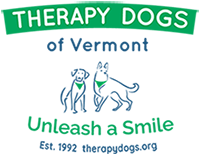By Katie E. Ziegler
The relationship of dogs and people is one that may date back more than 100,000 years when the first domestic dogs were thought to have existed (Wayne, 1993). It is a relationship that at first was very physical in nature, through working dogs, and has now evolved into a more emotional relationship known as the human-dog bond. (Case, 2005).
A bond is a close relationship that is established over time between two living creatures. It develops mutually and is a cooperative connection. Bonding is characterized by the formation of a strong attachment that involves many emotions. These include affection and trust among others (Human bonding , n.d.). The Human-dog bond is a deep connection between two species that exists like no other in the animal world.
This bond is fueled by many of the basic elements of human nature. A humans need to nurture is so intense that when this need is not met incidences of depression increase and the individuals overall health is negatively impacted. The ability to nurture a dog allows for the expression of love and affection and an outlet for nurturing behaviors, leading to better mental and physical health (Case 2005). Studies have shown that in elderly people dogs have proven to greatly enhance their quality of life. Dogs do this through reducing the occurrence of depression and feelings of loneliness. They are also a powerful motivational force to be more active and social. When in the presence of an animal companion elderly people especially are more likely to engage in activities that they otherwise would not have done. Whether it is the simple act of throwing a ball or taking them for a walk dogs are able to persuade their owners to participate in life (Hart, 2008).
The human-dog bond not only provides happiness, but it also has many health benefits for both parties involved. Studies have shown that the simple act of being around and petting a dog can reduce the blood pressure and heart rates of dog and human. Neurochemical and hormonal values are also positively affected by the bond (Case, 2005).
Stress reduction in both parties is another significant product of the human-dog bond. The nonjudgmental character of the dog provides many feelings of comfort to humans and as a result stress levels are substantially reduced. Humans can talk, read, and fully express themselves in the presence of a dog without fear of judgment. They experience unconditional love and many physical changes occur through these feelings of ease that the companionship of a dog provides. Physical changes in humans linked to relaxation and reduced stress are positively affected. These include increases in plasma concentrations of beta-endorphin and dopamine. Dogs also show signs of stress reduction when in the presence of their humans through reduced blood pressure and heart rate (Case, 2005).
Animal-Assisted Therapy has been used for over 100 years to provide emotional support, friendship, and physiological health benefits to a diverse group of people. This type of therapy is solely possible through the human-dog bond. Dr. Boris Levinson, a psychologist in the 1960s, began to incorporate the use of animals in his therapy sessions with patients. Levinson found that patients were able to develop an affectionate and trusting relationship with the animals and eventually were able to open up and build a relationship working with him. AAT programs are now benefitting people throughout the medical field, schools, nursing homes, and long-term care facilities, among others (Case, 2005).
The unconditional love that dogs surround us with facilitates a bond that has been around for thousands of years. Dogs have proven to be beneficial to our health through things as simple as being a motivation to be more active, to lowering blood pressure, heart rate and stress levels. The dog has truly impacted the lives of humans in a positive way while at the same time receives comfort, companionship and better health through this cooperative bond (Case, 2005).
References:
Case, L. P. (2005). Man and Wolf: The process of domestication. The dog: its behavior, nutrition, and health (2. ed.). Malden, MA: Blackwell Publishing.
Hart, Lynette. “Companion animals enhancing human health and wellbeing (Proceedings) – Veterinary Healthcare.” Veterinary Healthcare – dvm360 – Veterinary News, medicine, business, hospital design, events, and community for veterinarians and their teams. N.p., 1 Aug. 2008. Web. 12 Oct. 2011. .
“Human bonding – Wikipedia, the free encyclopedia.” Wikipedia, the free encyclopedia. N.p., n.d. Web. 12 Oct. 2011.
Wayne, R. (1993, June). Molecular evolution of the dog family. Trends in Genetics, 9, 218-224.
